Google’s Big Earnings Takeaways: AI, Google Cloud Profit, Hiring
From Google Cloud turning a profit for the first time to Google’s hiring outlook in 2023 and bold artificial intelligent vision, CRN breaks down the six biggest takeaways from Google’s first quarter 2023 financial earnings report.
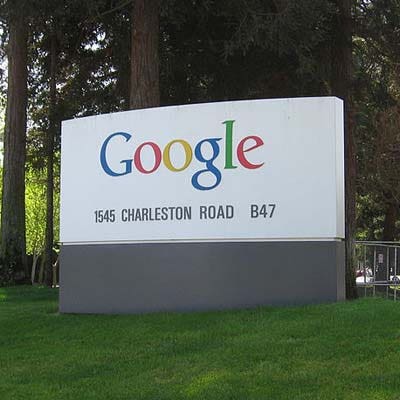
For the first time ever, Google Cloud turned a profit thanks to a 28 percent spike in sales which represented the fastest growing segment of its parent company Google.
During Google’s first quarter financial earnings report yesterday, CEO Sundar Pichai said he is bullish about investing in Google Cloud around artificial intelligence as well as driving enterprise customer momentum and continued profitability.
“Google Cloud delivered profitability this quarter and we remain focused on long-term value creation here,” said Pichai. “We continue to be on a long and exciting journey to build that business.”
Additionally, Google executives spoke about the $280 billion company’s plan around hiring for the remainder of 2023, as well as the $2.6 billion charges mostly related to employee severance payments after Google laid off 12,000 employees.
[Related: Red Hat Layoffs: Cuts, ‘Cultural Change’, CEO Decision—5 Things To Know]
Google’s Q1 Earnings Results
Before jumping into the biggest takeaways from Google’s (GOOGL) first quarter 2023 earnings results, looking at the company’s overall results, Google generated total revenue of $69.8 billion. This represents an increase of 3 percent compared to the $68 billion in sales Google captured in first quarter 2022.
Operating income for Google was $17.4 billion for the quarter, down from $20.1 billion year over year. Google reported a net income of $15 billion, a decrease from $16.4 billion in first quarter 2022.
AI was top of mind for Pichai and the other Google executives on the earnings call with media and analysts.
“Our open approach to AI development, coupled with our industry-leading TPUs and best-in-class GPUs from NVIDIA, enable innovative companies to tackle any AI workload with speed and flexibility,” said Pichai.
CRN breaks down the six biggest takeaways from Google’s first quarter 2023 earnings call around Google Cloud, AI and employee layoffs and hiring.
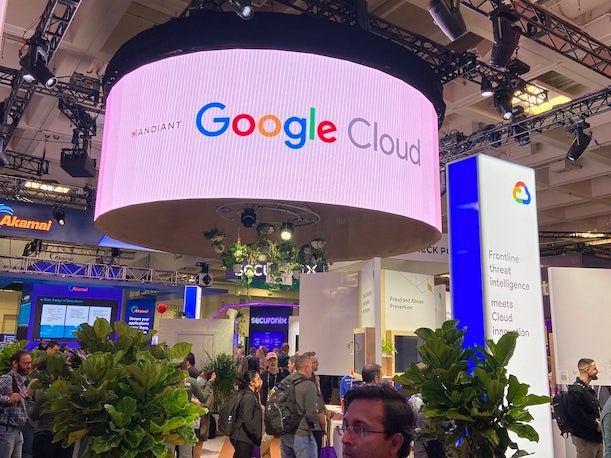
Google Cloud Turns A $191 Million Profit
After years of generating an operating loss, for the first time in its history, Google Cloud turned a profit during the first quarter of 2023.
Google Cloud generated operating income of $191 million for the quarter. Comparatively, during the first quarter of 2022, the company reported an operating loss of $931 million.
Google Cloud generated total revenue of $7.45 billion, an increase of 28 percent from $5.82 billion revenue in first quarter 2022.
“Over the past three years, GCP’s annual deal volume has grown nearly 500 percent, with large deals over $250 million growing more than 300 percent,” said Pichai. “Nearly 60 percent of the world’s 1,000 largest companies are Google Cloud customers.”
Looking at the history of Google Cloud’s operating loss: in fourth quarter 2022, the company generated an operating loss of $480 million. In third quarter 2022, Google Cloud reported an operating loss of $699 million. For its second quarter 2022, Google Cloud generated an operating loss of $858 million.
The Takeaway: For its entire fiscal year 2022, Google Cloud reported an operating loss of nearly $3 billion. The turn from operating at a loss to generating profitability is a huge win for Google Cloud, highlighted by a 28 percent increase in sales.
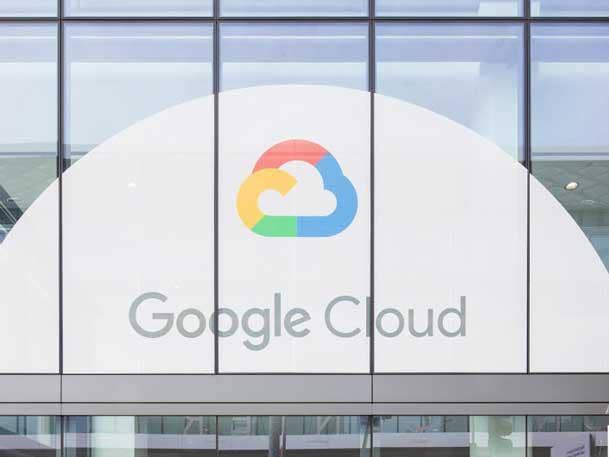
Economy Slowing Cloud Consumption ; Long-Term GCP Profitability Is The ‘Focus’
Although Google Cloud sales and profitability are heading in the right direction, Google Chief Financial Officer Ruth Porat said economic “uncertainty” is leading to a slowdown in GCP consumption.
“In the first quarter, we continued to see slower growth of consumption as customers optimized GCP costs reflecting the macro[economic] backdrop, which remains uncertain,” said Porat during the company’s earnings report.
Google’s CFO said Google Cloud saw “some headwinds from slower growth of consumption, with customers really looking to optimize their costs given that macro climate.”
However, Google’s CEO and CFO said they were pleased with the momentum of Google Cloud and the constant innovation being launched by its cloud arm.
“In terms of operating performance, we remain focused on driving long-term profitable growth in cloud, while continuing to invest given the substantial opportunity,” said Porat.
The Takeaway: Although customers might be consuming less GCP right now, sales growth and innovation remains high right now for both the near- and long-term for Google Cloud.

Google’s Headcount Surged Despite Recent Layoffs
As of March 31, 2023, Google’s total headcount is 190,711.
In March 2022, the company’s headcount was 163,906—about 26,800 less than in March 2023.
In January, Google parent company Alphabet announced it would be laying off 12,000 employees.
Google’s current headcount of 190,711 employees includes “almost all of the employees affected by the reduction” of 12,000 employees. Google expects most of those employees affected will no longer be reflected in its headcount by the end of the second quarter of 2023.
Google’s CFO said her company is “meaningfully slowing the pace of hiring in 2023, while still investing in priority areas, particularly for top engineering and technical talent.”
The Takeaway: Google’s headcount is significantly larger in 2023 compared to 2022 even after axing 12,000 employees this year. These numbers, as well as Google’s pledge to continue hiring top technical talent, bodes very well for Google Cloud.
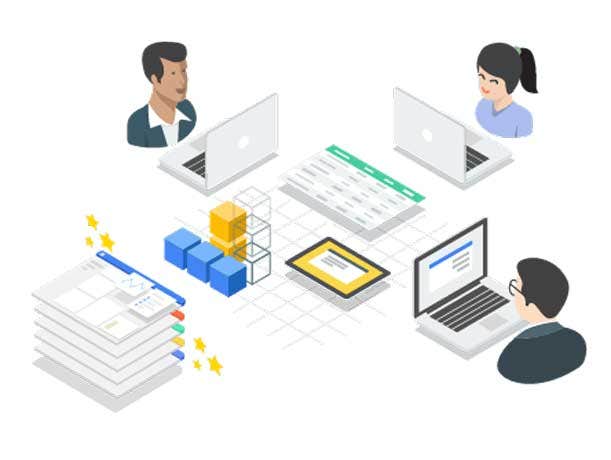
Google’s North Star: AI
As the battle for cloud AI supremacy continues between Google, Microsoft and Amazon Web Services, Sundar Pichai is confident in his company’s strategy. Google’s CEO highlighted several new innovations including its conversational AI service Bard, and PaLM API for developers.
“Our open approach to AI development, coupled with our industry-leading TPUs and best-in-class GPUs from NVIDIA, enable innovative companies to tackle any AI workload with speed and flexibility,” said Pichai. “We are the only cloud provider to announce availability of NVIDIA’s new L4 Tensor Core GPU with the launch of our G2 VMs, which are purpose-built for large inference AI workloads, such as generative AI.”
In March, Google introduced its Bard AI service and has since added its PaLM model to make it even more powerful. “Bard can now help people with programming and software development tasks, including code generation, lots more to come,” said Google’s CEO.
For developers, Google recently released its PaLM API alongside a new MakerSuite tool, which provides a simple way to access Google’s large language models and begin building new generative AI applications quickly.
“Our growth is also driven by our product leadership. We are bringing our generative AI advances to our cloud customers across our cloud portfolio,” said Pichai. “Our North Star is providing the most helpful answers for our users, and we see huge opportunities ahead, continuing our long track record of innovation.”
The Takeaway: Customers and partners should expect Google Cloud to launch new AI innovations at a rapid pace for the rest of the year as Google looks to win AI customer mindshare against Microsoft and AWS.
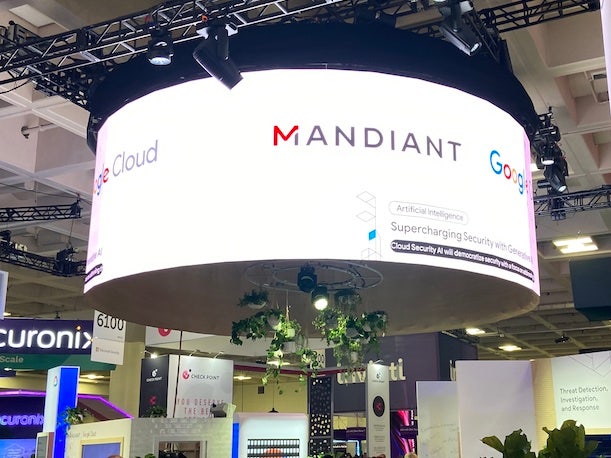
Google Leveraging Mandiant AI, Combining AI Groups
Google has introduced generative AI to identify and prioritize cyber threats, automate security workflows and response, and help scale cybersecurity teams for its large customer base, Pichai said. This security innovation is, in part, thanks to Google’s blockbuster $5.4 billion acquisition of cybersecurity superstar Mandiant last year.
“We are successfully integrating Mandiant with our products, including Mandiant Threat Intelligence and Breach Analytics,” said Google’s CEO.
To accelerate AI innovation and progress, Google is combining its Google Research team, dubbed the Brain Team, with its cutting-edge AI subsidiary DeepMind into a single unit.
“Combining all this talent into one focused team, backed by the pooled computational resources of Google, will help accelerate our progress and develop the most capable AI systems safely and responsibly,” said Pichai.
“So both are getting access to pool talent so that they can work together in a coordinated way which will definitely will help us pool our computational resources, which is going to be critical and will help us build,” he said. “The core product is obviously building more capable models safely and responsibly and taking into account all the capabilities our customers need, both on the consumer side and the cloud side and being able to iterate and getting that virtuous cycle going.”
The Takeaway: Google is combining its AI experts under one roof to try to accelerate AI innovation even faster.

Google Layoffs, Office Space Costs: $2.56 Billion
As a result of its 12,000 layoffs this year, employee severance and related charges totaled $2 billion during the quarter.
This represented the majority of expected costs associated with Google’s workforce reduction, according to Google.
Breaking down the employee severance and related charges: costs of approximately $835 million were on research and development; $445 million on sales and marketing; and $253 million on general and administrative (G&A) costs.
Additionally, Google “optimized” its global office space during the quarter by closing some offices. As a result of office space reductions, Google witnessed charges of $564 million during the quarter.
“We are taking concrete steps to manage our real estate portfolio to ensure it meets our current and future needs,” said Google’s CFO.
The Takeaway: Google wrapped up the layoffs of 12,000 employees and the reduction of its real estate space for a grand total of $2.56 billion. This should help boost Google’s operating income—which was $17.4 billion in first quarter 2023 compared to over $20 billion year over year—for the near future.